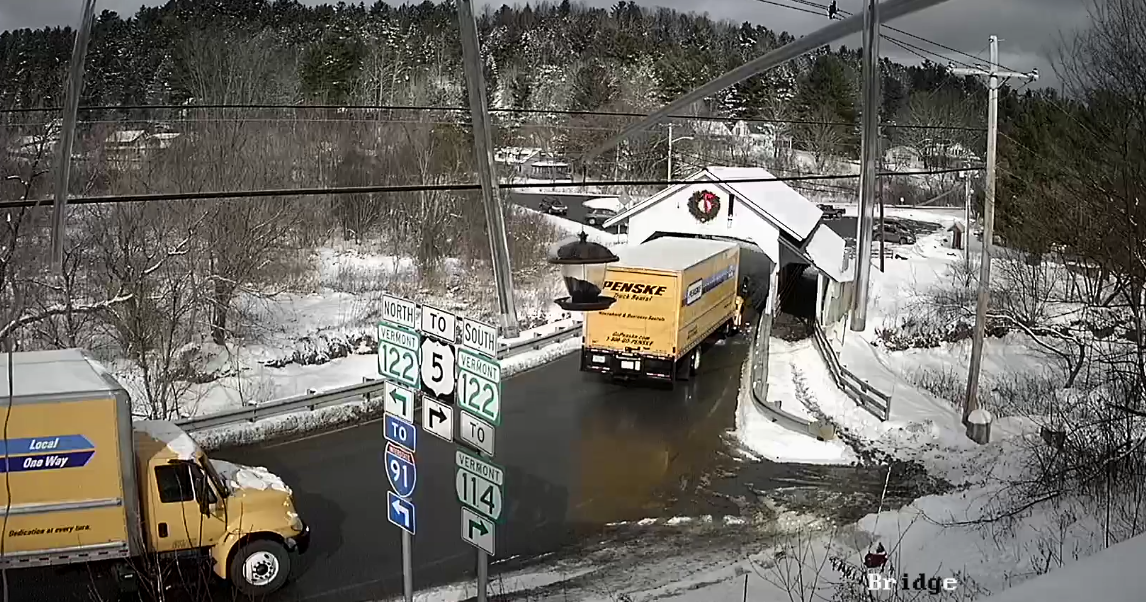Folks:
Covered bridges proved quite popular among county governments due to their reduced costs of maintenance. The initial cost was usually higher, but the bridges more than paid for themselves over their period of service.
Covered bridges generally featured one of two support and bearing systems: the Burr Arch and the Town Truss. Theodore Burr received a patent for his design on April 3, 1817, although he had employed the design prior to obtaining the patent. A good early example of his style of covered bridge can be observed in photographs of the first bridge across the Delaware River in Trenton, completed in 1806.
In Burlington County, the covered bridge at Bridgeboro, over the Rancocas Creek, is a fine specimen of a Burr Arch. Built in 1838 by T. Baker, this double covered bridge with a center swingspan replaced a span first built in 1793. In April 1918, the Willingboro covered section caught fire and fell into the creek. Bevery almost lost a brand new pumping engine when the bridge fell.
The bridge remained in service until 1927, when the State Highway Department replaced it with a single-leaf bascule bridge. In 1989, a high fixed span replaced the drawbridge.
Architect Ithiel Town based his design on his experience of building relatively inexpensive bridges. Town's design featured a crisscross or lattice support system for the bridge. In New Jersey and elsewhere, Woodbury resident Amos Campbell was the preeminent builder of Town Truss bridges. There were few Town Truss bridges that he, or his son, Henry, did not construct. Born in Bucks County in 1780, he moved to Woodbury when in his twenties and married Ann Roe. In 1849, at the age of 69, he traveled to Maumee, Ohio, where officials had contracted him to build his largest covered bridge, measuring over 600 feet long, built with multiple spans. The South Jersey bridges that he constructed include the following:
Crosswicks Creek Bridge, completed in 1833 and remained in service until 1908.
Amos built the Dividing Creek Bridge in 1841. The span measured 60 feet long and 16 feet wide. The Army Corps of Engineers ordered it replaced with a movable bridge in 1902.
In 1830, Amos traveled to Port Elizabeth and build this covered bridge at a cost of $2350:
One of the longer bridges Amos built in South Jersey was the Salem bridge, or more correctly known as the Penns Neck Bridge, over the Salem River. He erected the bridge in 1831 and remained in service until 1922.
Amos also built this small bridge over Beaver Creek on Auburn Road.
Other bridges constructed by Amos Campbell included:
Woodbury, carrying Broad Street over the Woodbury Creek
Big Timber Creek
Hancocks Bridge, $4300
Raccoon Creek, 1829, demolished in 1894
Spicers Ferry, Coopers Creek, Camden, 1833. Replaced by an iron swing span in 1868 built by Henry R. Campbell, Amos's son.
Dennisville, 1844-1885
Amos died August 24, 1868, and he lies in repose in the old Presbyterian Church cemetery on Broad Street (Route 45) in North Woodbury. Son Henry R. Campbell became known as the bridgebuilder of New England during the mid nineteenth century.
Best regards,
Jerseyman



